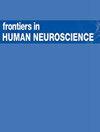建立挪威儿童听力登记册
IF 2.4
3区 医学
Q3 NEUROSCIENCES
引用次数: 0
摘要
导言挪威卫生局于2022年批准了挪威儿童听力登记册。该登记册的主要目的是通过采取措施、跟踪和监测医疗保健系统的质量和结果,提高永久性听力损失儿童的治疗质量。方法纳入标准为未通过普遍新生儿听力筛查的儿童和/或永久性听力损失儿童<18岁。听力损失的定义是至少有一只耳朵的纯音测听阈值达到 (PTA4) > 20 dB。数据在入组和 3、6、10 和 15 岁随访时在耳鼻喉科登记。登记册从整体角度收集儿童的信息。登记册的主要内容包括:(a) 新生儿听力筛查数据;(b) 有关听力、医疗信息、听力放大和干预的数据;(c) 患者报告的结果测量,由护理人员使用三种问卷进行登记:儿科生活质量量表、优势和困难问卷以及家长对儿童听力/口腔表现的评价。结果登记册确定了有关新生儿听力筛查和早期干预的四项质量指标:(a)新生儿听力筛查假阳性率;(b)对未通过新生儿听力筛查的儿童在出生后 3 周内进行先天性巨细胞病毒检测;(c)最迟在出生后 3 个月内进行听力评估以确认听力状况;以及(d)在确认听力状况后 3 个月内开始干预。因此,登记册可使每家医院持续监测其质量指标得分,并将其与全国水平进行实时比较。这有助于并加快确定医院的改进领域,并将为挪威国家医疗服务体系、诊断和儿童听力干预的质量改进做出重要贡献。此外,登记册中的数据将成为独特的研究来源,可用于长时间跟踪的研究设计。本文章由计算机程序翻译,如有差异,请以英文原文为准。
Establishment of the Norwegian hearing register for children
IntroductionThe Norwegian Directorate of Health approved the Norwegian Hearing Register for Children in 2022. The main objective of the register is to improve the quality of treatment for children with permanent hearing loss, by measures, follow-ups and monitoring the quality and results of the health care system.MethodsInclusion criteria are children who do not pass universal newborn hearing screening and/or children with permanent hearing loss <18 years of age. Hearing loss is defined as pure-tone audiometry threshold of (PTA4) > 20 dB in at least one ear. Data are registered at the Ear, Nose and Throat departments at inclusion and at follow-ups at the age of 3, 6, 10, and 15 years. The register collects information about the child within a holistic perspective. The key elements of the register are (a) data concerning newborn hearing screening; (b) data concerning hearing, medical information, hearing amplification and intervention (c) patient reported outcome measures registered by caregivers using three questionnaires; Pediatric Quality of Life Inventory, Strengths and Difficulties Questionnaire and Parents’ Evaluation of Aural/Oral Performance of Children.ResultsThe register has established four quality indicators regarding newborn hearing screening and early intervention (a) the rate of false positive neonatal screens; (b) testing for congenital cytomegalovirus within 3 weeks of age for children who do not pass newborn hearing screening; (c) audiological evaluation to confirm the hearing status no later than 3 months of age and (d) initiated intervention within 3 months after confirmation of hearing status.DiscussionThe register will include the total population of hearing impaired children over long time periods. Thus, the register enables each hospital to monitor their quality indicator scores continuously and compare them with national levels in real time. This facilitates and accelerates identification of improvement areas in the hospitals and will be an important contributor for quality improvement in NHS, diagnostics and hearing intervention for children in Norway. In addition, data from the register will be a unique source for research, and study designs with a long follow-up time can be applied.
求助全文
通过发布文献求助,成功后即可免费获取论文全文。
去求助
来源期刊

Frontiers in Human Neuroscience
医学-神经科学
CiteScore
4.70
自引率
6.90%
发文量
830
审稿时长
2-4 weeks
期刊介绍:
Frontiers in Human Neuroscience is a first-tier electronic journal devoted to understanding the brain mechanisms supporting cognitive and social behavior in humans, and how these mechanisms might be altered in disease states. The last 25 years have seen an explosive growth in both the methods and the theoretical constructs available to study the human brain. Advances in electrophysiological, neuroimaging, neuropsychological, psychophysical, neuropharmacological and computational approaches have provided key insights into the mechanisms of a broad range of human behaviors in both health and disease. Work in human neuroscience ranges from the cognitive domain, including areas such as memory, attention, language and perception to the social domain, with this last subject addressing topics, such as interpersonal interactions, social discourse and emotional regulation. How these processes unfold during development, mature in adulthood and often decline in aging, and how they are altered in a host of developmental, neurological and psychiatric disorders, has become increasingly amenable to human neuroscience research approaches. Work in human neuroscience has influenced many areas of inquiry ranging from social and cognitive psychology to economics, law and public policy. Accordingly, our journal will provide a forum for human research spanning all areas of human cognitive, social, developmental and translational neuroscience using any research approach.
 求助内容:
求助内容: 应助结果提醒方式:
应助结果提醒方式:


